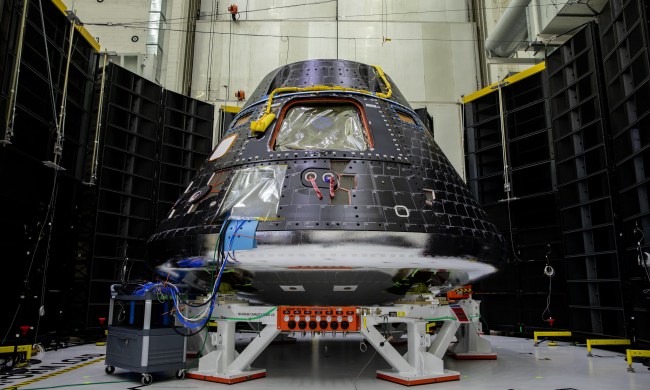NASA’s next-generation rocket for the Artemis mission to the moon, the Space Launch System (SLS), has been through its share of troubles. But progress continues on the project, and NASA has announced that it has reached a milestone in progress toward firing the engines in the first “hot fire” test.
The SLS rocket core stage is currently undergoing a series of tests called Green Run, in which all of the hardware that makes up the stage is tested. This includes testing the flight computers, propellant tanks, propulsion systems, and more.
In total, Green Run consists of eight tests including the propellant tanks being loaded for the first time, checking the feed systems which carry propellant to the tanks, firing all four of the stage’s engines for the first time, and recreating the environment of the launch in terms of vibrations and temperature to check the hardware stands up to the rigors of launch.

Now, the first four of these eight tests have been completed. The most recent test was the checking of the propulsion system components which connect to the engines, to ensure that nothing is leaking and that everything works as intended. Instead of using actual rocket fuel for this test, NASA engineers used nitrogen and helium gases, pushing them through the system over a period of three weeks to look for leaks.
“With test gases flowing through this many parts of a complex rocket stage, we expected the test team to encounter some issues,” Jonathan Looser, who manages the SLS core stage main propulsion system, said in a statement.
“Historically, there’s never been a NASA human-rated launch vehicle flown without one or more full-up tests before flight, and they have all encountered first-time issues. As expected, we found a few with valves and seals and addressed them, and now we’re ready to complete the next four Green Run tests.”
The tests are conducted at NASA’s Stennis Space Center near Bay St Louis, Mississippi, where staff are preparing for the next set of tests culminating in a full firing of the four engines in the “hot fire” test before the stage is sent to the Kennedy Space Center in Florida.



